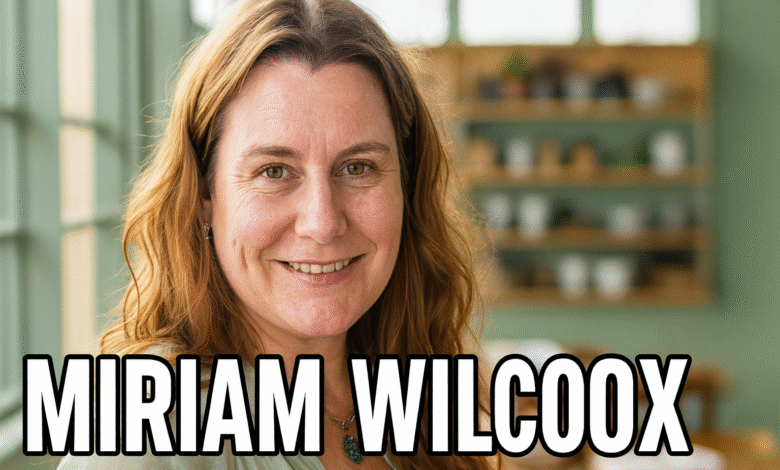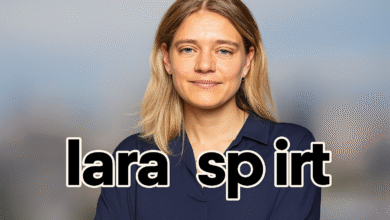Miriam Wilcox: A Journey of Resilience, Privacy, and Quiet Courage

Introduction
When discussing resilience in the face of adversity, the story of miriam wilcox stands out as an inspiring yet private narrative. Known primarily as the daughter of British broadcaster Esther Rantzen and filmmaker Desmond Wilcox, Miriam has lived much of her life outside the spotlight. Her life took a dramatic turn as a teenager when illness reshaped her path, yet she chose dignity, privacy, and quiet strength over fame.
This article explores her journey—from the onset of illness to her recovery milestones, her family’s support, and her life beyond the public eye.
Who Is Miriam Wilcox?
Miriam Wilcox was born in 1978 to Esther Rantzen and the late documentary filmmaker Desmond Wilcox. She is the eldest sibling of Rebecca Wilcox, a television presenter, and Joshua Wilcox. Raised in a family deeply connected to media and advocacy, Miriam grew up with opportunities that could have placed her in the public eye. However, circumstances and her personal choices have kept her largely away from the limelight.
Her early years reflected intelligence, warmth, and sensitivity, but her teenage life was interrupted by a serious medical condition that transformed her entire journey.
Miriam Wilcox Illness: A Life-Altering Diagnosis
At the age of 14, Miriam developed what initially appeared to be glandular fever. Unfortunately, this progressed into myalgic encephalomyelitis (ME), also known as chronic fatigue syndrome (CFS). The illness severely impacted her physical and cognitive abilities, forcing her into long periods of isolation and immobility.
For many years, she was bedridden—unable to read, write, or even speak clearly with her loved ones. What should have been the formative years of her adolescence became a painful struggle against an invisible and misunderstood condition.
Symptoms She Endured
Living with ME/CFS, Miriam faced a range of symptoms that stripped away her independence:
-
Extreme fatigue and muscular pain
-
Sensitivity to light
-
Cognitive impairments and “brain fog”
-
Loss of motor coordination and speech difficulties
These challenges made even the simplest daily activities exhausting, leaving her dependent on her family’s care.
A Mother’s Advocacy: Esther Rantzen’s Support
While Miriam herself stayed away from publicity, her mother, Esther Rantzen, took up the cause. As a respected broadcaster and campaigner, Esther spoke out about Miriam’s struggles, often describing the illness as “a sticky web that slowly paralysed her.”
Her advocacy helped raise awareness about ME/CFS, a condition that was often dismissed or misunderstood by the medical community. Public campaigns, charity involvement, and media appearances led to greater visibility for chronic illness patients across the UK.
Through Esther’s voice, miriam wilcox became a symbol of resilience and hope for families facing similar battles.
The Long Road to Recovery
Recovery for Miriam was gradual and painstaking. Small milestones—like moving a finger or sitting up in bed—were celebrated as victories. Over time, she progressed from being completely bedridden to using a wheelchair, and eventually, to walking with assistance.
Her determination in reclaiming independence reflects not just physical recovery but emotional healing as well. Despite all odds, Miriam’s perseverance demonstrates the strength it takes to redefine life after long-term illness.
Personal Life: Marriage and Family
One of the most frequently asked questions about miriam wilcox is whether she is married or has children.
-
Marriage: There are no public records confirming whether she is married. Unlike her sister and mother, she has always chosen to keep her private life away from the media.
-
Children: Similarly, there is no verified information on whether she has children. Given her long-term health struggles, family planning may have been influenced by personal and medical considerations.
Her decision to remain private has been respected, as she has consistently chosen to shield her personal relationships from public scrutiny.
Early Life and Education
Before illness disrupted her adolescence, Miriam was an outstanding student with a bright academic future. Born in the late 1970s and raised in the UK, she was part of a family engaged in creative and social causes. Sadly, her health condition altered her path, steering her away from what could have been a conventional career or public profile.
Media and Public Appearances
Unlike her siblings, Miriam has not actively pursued media opportunities. Her rare appearances have mostly been linked to her mother’s charity initiatives or illness awareness campaigns.
Photos and reports show her supporting family events but rarely taking center stage. This quiet presence underscores her preference for privacy and dignity.
Life Outside the Spotlight
Today, Miriam is believed to live a peaceful and private life, focused on health, wellness, and quiet pursuits. While details of her day-to-day life remain undisclosed, her commitment to privacy demonstrates a clear choice to separate her personal identity from public expectation.
Her life reflects the reality of many people with chronic illnesses—managing health while building a fulfilling life away from attention.
Impact on Chronic Illness Awareness
Although she never sought publicity, miriam wilcox has had a significant impact on chronic illness awareness. Through her mother’s campaigning, her story became a focal point in discussions about ME/CFS.
Her journey has been featured in documentaries, medical discussions, and support forums. By quietly living through her illness, she has helped others feel seen and validated in their struggles.
The Quiet Strength of Miriam Wilcox
What makes Miriam’s journey extraordinary is not fame or recognition, but her determination to live with dignity. She represents thousands of patients who fight invisible illnesses daily, often without acknowledgment.
Her resilience, combined with her choice to live privately, reinforces the idea that true strength does not need a stage—it can exist quietly, in the background, yet inspire countless others.
FAQs about Miriam Wilcox
Q1: Who is Miriam Wilcox?
She is the daughter of broadcaster Esther Rantzen and filmmaker Desmond Wilcox, known for her resilience in battling ME/CFS.
Q2: What illness does she have?
She was diagnosed with myalgic encephalomyelitis (chronic fatigue syndrome) at the age of 14.
Q3: Is Miriam Wilcox married?
There is no public confirmation about her marital status. She has chosen to keep such details private.
Q4: Does Miriam Wilcox have children?
No verified public information confirms whether she has children.
Q5: What role did her mother play in her journey?
Her mother, Esther Rantzen, publicly advocated for awareness about ME/CFS and supported her daughter through years of illness.
Q6: Why is she considered inspiring?
Despite severe health challenges, she showed resilience and quiet strength, inspiring others facing chronic illnesses.
Conclusion
The story of miriam wilcox is not one of fame or spotlight, but of courage, endurance, and privacy. Her journey through chronic illness highlights the realities of living with an invisible condition while maintaining dignity and strength.
Thanks to her mother’s advocacy and her own quiet perseverance, she has helped bring visibility to ME/CFS and other chronic conditions. In choosing privacy, Miriam reminds us that the most powerful stories are not always loud—they can be lived quietly, yet inspire deeply.
Read also: Mercedes Spall: Life, Family, and the Quiet Legacy She Upholds



